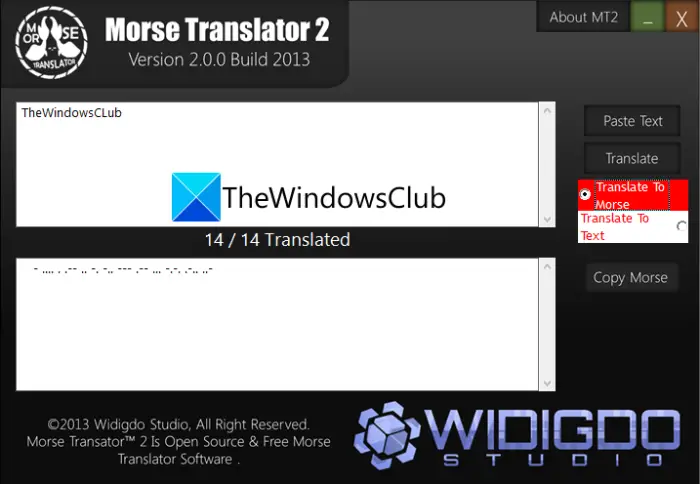

the codeword starts from the left edge of the frame. The baseline dataset has no leading spaces before the 1st dot or dash, i.e. This is to mimic the human writer who is not expected to make each symbol have a consistent length, but can be expected to make dots and spaces around the same size, and dashes longer than them. The exact length of a dot, dash or space is chosen from these ranges according to a uniform probability distribution. The space between a dot and a dash can have a length of 1-3 values. Where the size or duration of a dash is around 3 times that of a dot. This is in accordance with international Morse code regulations In the baseline dataset, a dot can be 1-3 values wide and a dash 4-9. Within the frame, the length of a sequence having consecutive similar values is used to differentiate between a dot and a dash. įor our algorithm, each Morse codeword lies in a frame which is a vector of 64 values. Synthetic data has been successfully used in problems such as 3D imaging, point tracking, breaking Captchas on popular websites, and augmenting real world datasets. The effects of dataset size on network performance has been explored in, in particular, more inputs are beneficial in reducing overfitting and improving robustness and generalization capabilities of NNs. The advantages are that a) computer algorithms can be tuned to mimic real-world settings to desired levels of accuracy, and b) a theoretically unlimited amount of data can be generated by running the algorithm long enough. Synthetic data are generated using computer algorithms instead of being collected from real-world scenarios. A possible solution is to obtain data by synthetic instead of natural means. It is therefore often a challenge to obtain adequate amounts of high quality and accurate data required to sufficiently train a NN. The training stage is data-hungry and typically requires thousands of labeled examples. prediction) of the classes of input samples whose class labels are not available. A NN is first trained using numerous examples where the input sample and its class label are both available, then used for inference (i.e. The inputs and their classes are drawn from a dataset, such as the MNIST dataset containing images of handwritten digits, or the CIFAR Īnd ImageNet datasets containing images of common objects such as birds and houses. In such problems, the neural network (NN) processes an input sample and predicts which class it belongs to. Neural networks in machine learning systems are commonly employed to tackle classification problems involving characters or images.


 0 kommentar(er)
0 kommentar(er)
